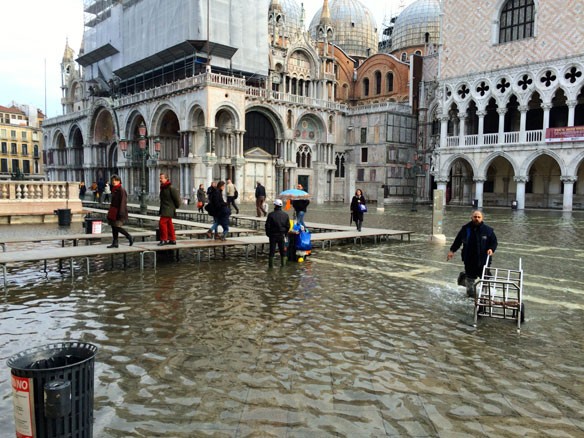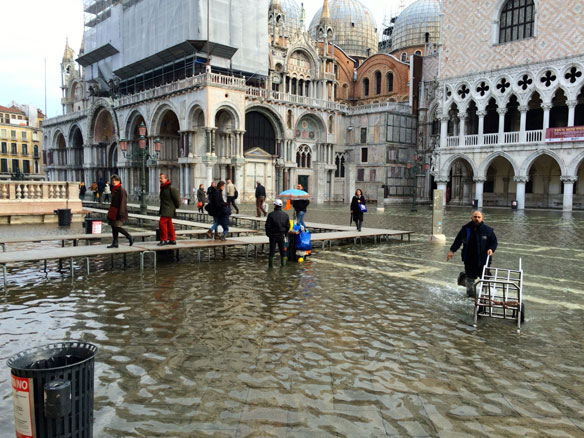
Venice, Italy. Photograph: © SAF — Coastal Care
Excerpts;
From Shanghai and Mumbai to New York and Buenos Aires, even a few feet of sea level rise threatens to flood homes and highways, inundate sewage treatment plants, and contaminate drinking water. Landscape architect Kristina Hill argues that cities need to start planning now for impacts that will happen 50 or 100 years in the future.
Hill advocates blending natural ecosystems and human-made infrastructure to help cities adjust to rising tides…
Reuters’ Water’s Edge Report Part I & Part II (09-19-2014)
Despite laws intended to curb development where rising seas pose the greatest threat, Reuters finds that government is happy to help the nation indulge in its passion for beachfront living…
Scientists Foresee Losses as Cities Fight Beach Erosion, Climate Central (09-14-2015)
NOAA study finds ‘living shorelines’ can lessen climate change’s effects, NOAA (12-22-2015)
Rethinking Living Shorelines, By Orrin H. Pilkey, Rob Young, Norma Longo, and Andy Coburn;Program for the Study of Developed Shorelines / Western Carolina University, March 1, 2012, Nicholas School of the Environment, Duke University
In response to the detrimental environmental impacts caused by traditional erosion control structures, environmental groups, state and federal resource management agencies, now advocate an approach known as “Living Shorelines”that embraces the use of natural habitat elements such as indigenous vegetation, to stabilize and protect eroding shorelines.
“The Beaches Are Moving,” A Video featuring Orrin Pilkey, PhD
World famous coastal geologist Orrin H. Pilkey takes us to the beach and explains why erosion has become a problem…
We Need to Retreat From the Beach, An Op Ed by Orrin H. Pilkey









